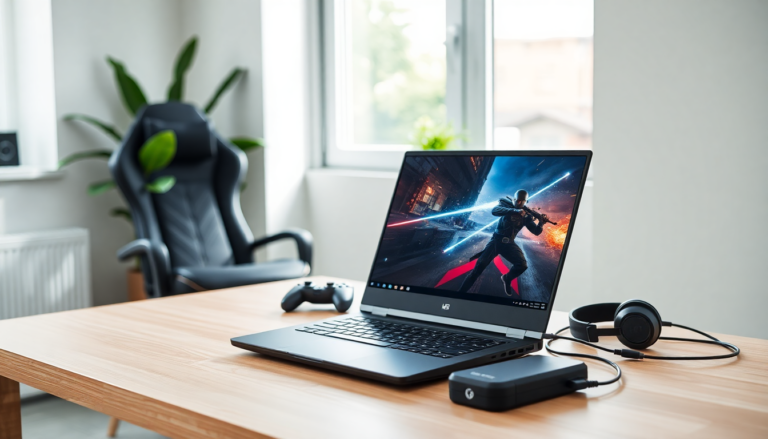Argomenti trattati
The realm of gaming technology is constantly evolving, and exciting advancements are just around the corner. Have you ever dreamed of enjoying high-quality graphics without being tethered to a bulky desktop setup? Well, that dream is becoming increasingly realistic thanks to groundbreaking innovations. At the heart of this evolution are external graphics processing units, or eGPUs, which promise to supercharge the gaming capabilities of lightweight laptops and handheld devices.
The Current Landscape of eGPUs
Recently, the eGPU market has gained considerable traction, particularly with standout products like the Razer Core X V2. This external graphics solution acts as a bridge between portable devices and the robust graphical power typically found in desktop systems. Priced around $350, it leverages Thunderbolt 5 technology for lightning-fast data transfer, but it does require compatible devices to unlock its full potential. The Razer Core X V2 highlights the ongoing challenge of balancing portability with powerful performance, enabling users to connect an external GPU and elevate their gaming experience.
Yet, the eGPU landscape isn’t without its obstacles. Competing products, such as the Gigabyte Aorus RTX 5090 AI Box, illustrate a common concern: many eGPUs require users to purchase separate graphics cards and power supplies. This often leads to a scenario where, after investing in the eGPU, users find themselves just a step away from constructing a mini desktop PC. So, the pressing question is: could future designs integrate the benefits of eGPUs with the functionality of a docking station?
Envisioning the Future of eGPUs
Imagine a future where eGPUs are not just standalone boxes but comprehensive docking stations that seamlessly integrate with laptops and handheld devices. Such a solution would not only amplify gaming experiences but also simplify user setups. Just picture coming home after a long day, effortlessly connecting your lightweight laptop to a dedicated gaming station, instantly transforming it into a powerhouse for gaming.
Smaller companies are already exploring this exciting concept. Take, for instance, Ayaneo’s Graphics Starship, priced at $600, which houses an AMD Radeon 7600M XT and supports multiple monitors. However, maintaining a low profile while effectively managing power and heat remains a critical challenge. The real opportunity lies in developing devices that are not only functional but also compact enough to satisfy users who prioritize portability.
Asus is also stepping into the arena with its promise of the XG Mobile eGPU, which is compatible with high-end Nvidia GeForce RTX 5090 graphics. Though still in development, this product could redefine how gamers engage with handheld devices, offering a tantalizing glimpse into the future of portable gaming. But let’s not forget, desktop setups still hold the upper hand in terms of graphics capability, primarily due to hardware limitations, including data speeds that may cap the full performance of cutting-edge GPUs.
The Road Ahead: Challenges and Opportunities
The journey toward a fully integrated eGPU solution is riddled with challenges. Current USB 4 technology, with its maximum bandwidth of 40 Gbps, may not be enough for the most demanding graphics applications. Additionally, the limited availability of USB 4 compatibility in handheld devices hampers widespread adoption. As we anticipate the next generation of accelerated processing units (APUs), the potential for eGPUs to elevate mobile gaming remains tantalizingly close yet frustratingly out of reach.
In conclusion, while the vision of a portable gaming experience that rivals traditional desktops isn’t fully realized yet, advancements in eGPU technology and design are paving the way for a future where high-quality graphics become more accessible. Until then, gamers will continue to eagerly await the innovations that promise to reshape the gaming technology landscape.

